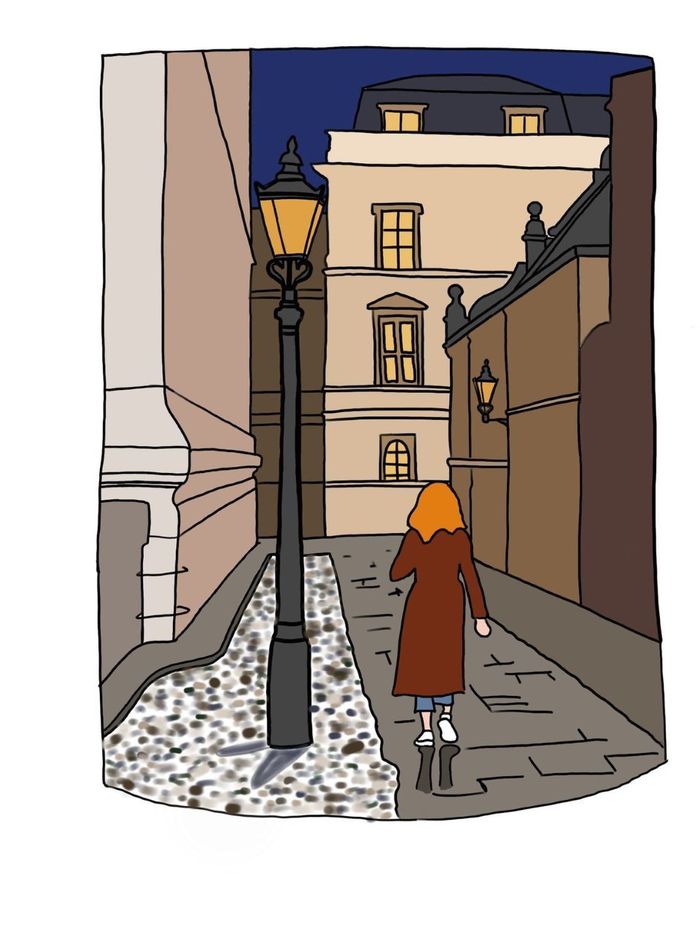Celebrating life through inked skin
Madeline Coole explores the toll which her grandmother’s loss took on her life, and how manifesting that grief physically, in the form of a tattoo, provided paradoxical relief

Content note: this article contains detailed discussions of grief
I have this photo inked on my body. Well, a version of it (obviously). I used a piece of sketch paper to trace the skeleton of the bush and flesh out the roses, handed it to the tattoo artist to drill insoluble ink into the second, more durable layer of skin (the dermis) on my ribs until, voilà, every time I wear a swimsuit someone will say “I didn’t know you had a tattoo!” forever and ever, amen. I have two.
I got the tattoo for my paternal grandmother, who passed away in January 2018. I was in Berlin doing research at the time, while she and my family were in a hospital in Kansas City, Missouri. It was not quite expected, but we know she was glad to go. At least, we hope so.
“A tattoo needle pierces the skin between 50 and 3,000 times per minute, every puncture a pinch of pain, a physical ode to remembrance”
The grief of her loss has never hit me full on in the way some people describe, but rather slips into my thoughts at unexpected times, eliciting a few tears before receding again. That’s not to say her death didn’t have a profound impact on my life, but that it was largely unseen, unobserved.
I finished the research in Germany mostly in bed, watching Netflix. I drifted through the next months studying abroad in Chile. For the majority of 2018, I was surrounded by people who did not know my grandmother. Who did not know the chocolate cookies she only bought when my brothers and I visited. Did not know her love of travelling, our summer days feeding the fish in Bennett Springs, how she absolutely thrashed any opponent at Scrabble or crossword puzzles. It was after a year spent in limbo, where I didn’t quite realise that I was in limbo, when I got the asinine idea to get this tattoo.
I got to brainstorming. Reviewing old letters she had written me, symbols of her life, and important dates, each capturing different meanings, moments, memories. What does a life come down to? Would any symbol be able to memorialise all of what your lost loved one once was and still is to you? If that is even possible.
In this process, I found the diary she had kept upon my birth. A Hallmark-type “Grandchildren’s Journal” that you fill out over the course of their childhood and gift them on their 18th birthday. Tucked into the cover was this photo.
“I imagine her going into that small living room where she and my grandfather had spent the past 50 years, looking out that front window”
Snapped idly one quiet spring day on a whim. I imagine her going into that small living room where she and my grandfather had spent the past 50 years, looking out that front window they must have gazed through a million times, seeing this rose bush that she loved because it always bloomed around her son’s (my father) birthday. Some emotion stirring in her heart, she scrounges around the house for the camera. Perhaps yelling up into that attic at my grandfather, lost in his newfound ancestry project, to ask where they put it after the trip to Dubai, Tom? In my mind, they had returned a week ago.
It is this I want to keep close. Her quiet, good, daily life, the things she loved, and all that she surrounded herself with. The things that caught her eye, the things she thought were worth remembering, the things that gave her life meaning.
Getting the tattoo itself was an embodiment of the wisdom that grief is as much emotional as it is physical. Many writers have documented its wordless agony. Chimamanda Ngozi Adichie: “You learn how much grief is about language, the failure of language and the grasping for language. Why are my sides so sore and achy?” Virginia Woolf: “For how could one express in words these emotions of the body? Express that emptiness there?” In getting the tattoo, I found it fitting that my mental and emotional travails would be accompanied by a parallel physical journey. A tattoo needle pierces the skin between 50 and 3,000 times per minute, every puncture a pinch of pain, a physical ode to remembrance.
A tattoo on one’s own body holds a permanence that sits in quiet opposition to the insuperable lacuna that is the death of a loved one. Though it may change, fade, stretch over time it is always there. In a way, my mind has allowed me to associate some facsimile of my grandmother’s essence with the tattoo. In running my fingers over the mark on my body, I simultaneously feel her mark on my life. In this representation, I have found great solace.
Over the past three years, there are days and weeks that I forget it exists. Then, there are moments when I stop to stare at the mark and let the memory of my grandmother waft through my mind like one of the gentle breezes that once swayed the roses on her lawn. My ink is a warm hug from a loving grandma who I still cannot believe is gone, who I will never forget, and always love.
I leave you with this wisdom, again from Chimamanda Ngozi Adichie’s essay, Notes on Grief:
“I finally understand why people get tattoos of those they have lost. The need to proclaim not merely the loss but the love, the continuity. I am my father’s daughter. It is an act of resistance and refusal.”
I am, indeed, my grandmother’s granddaughter.
 News / SU reluctantly registers controversial women’s soc18 December 2025
News / SU reluctantly registers controversial women’s soc18 December 2025 Features / Should I stay or should I go? Cambridge students and alumni reflect on how their memories stay with them15 December 2025
Features / Should I stay or should I go? Cambridge students and alumni reflect on how their memories stay with them15 December 2025 News / Dons warn PM about Vet School closure16 December 2025
News / Dons warn PM about Vet School closure16 December 2025 News / Cambridge study finds students learn better with notes than AI13 December 2025
News / Cambridge study finds students learn better with notes than AI13 December 2025 News / Uni registers controversial new women’s society28 November 2025
News / Uni registers controversial new women’s society28 November 2025










